Whether you're making a traditional Thanksgiving feast, hosting a family Sunday dinner, or craving a comforting side dish, there is no better time to make this Classic Savory Sage Stuffing Recipe.
Steeped in tradition, you'll love the cozy aroma of parsley, sage, rosemary, and thyme that may recall past holidays gathered around the table.
Pair this stuffing recipe with an entree of chicken or turkey and hearty wild rice casserole for a special meal the whole family will enjoy!
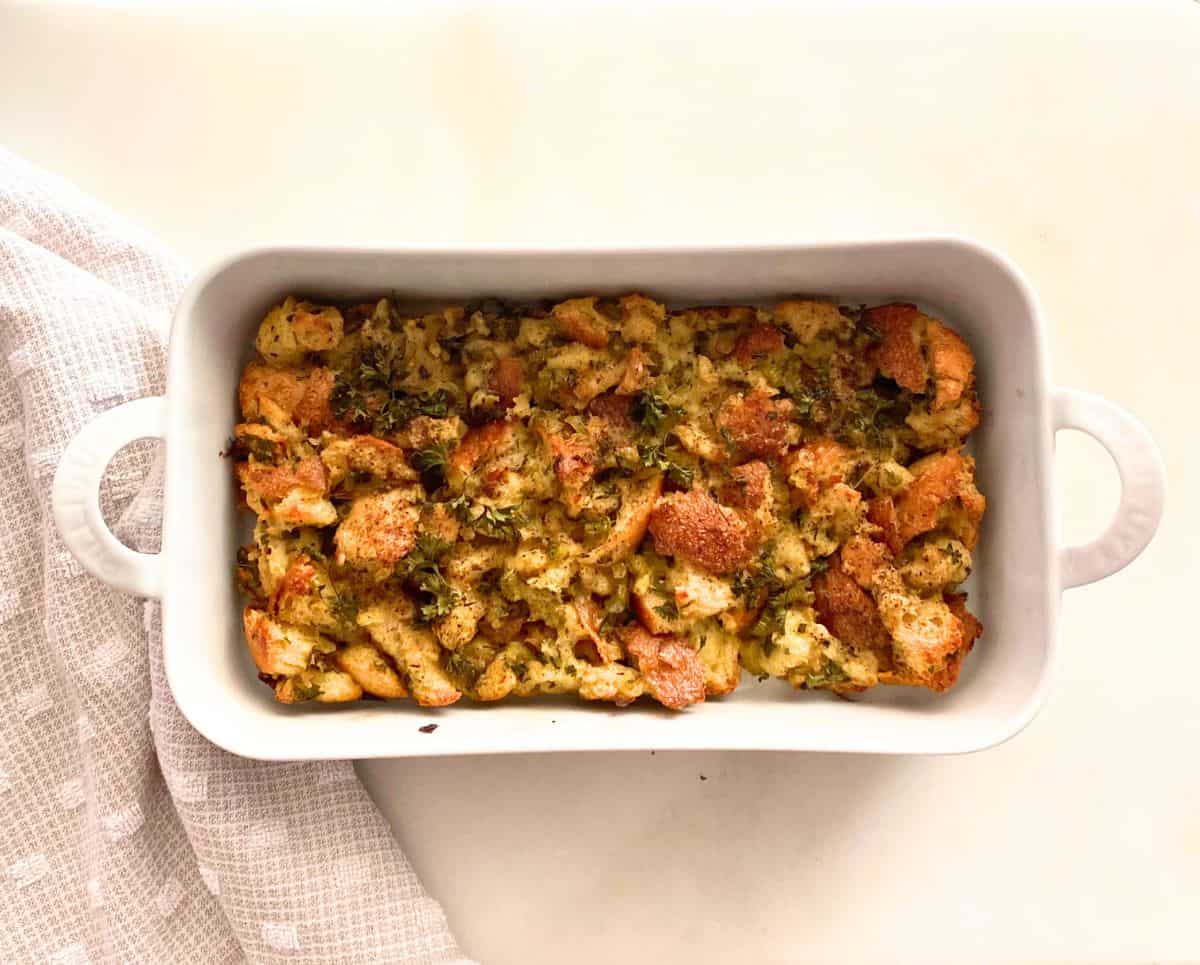
It seemed as if we would make any excuse to make boxed stuffing when I was growing up. You name the holiday-Thanksgiving, Christmas, Easter-and it always came with a side of stuffing or dressing, as it's also called.
(Technically, this recipe is dressing since it is not "stuffed" inside a turkey, but I think we use the terms interchangeably, so I prefer calling it stuffing.)
My mom made baked chicken, wild rice casserole, and stuffing practically every holiday.
Today, I like to control the ingredients in our food. I also prefer using fresh ingredients when possible. That is how this recipe came about.
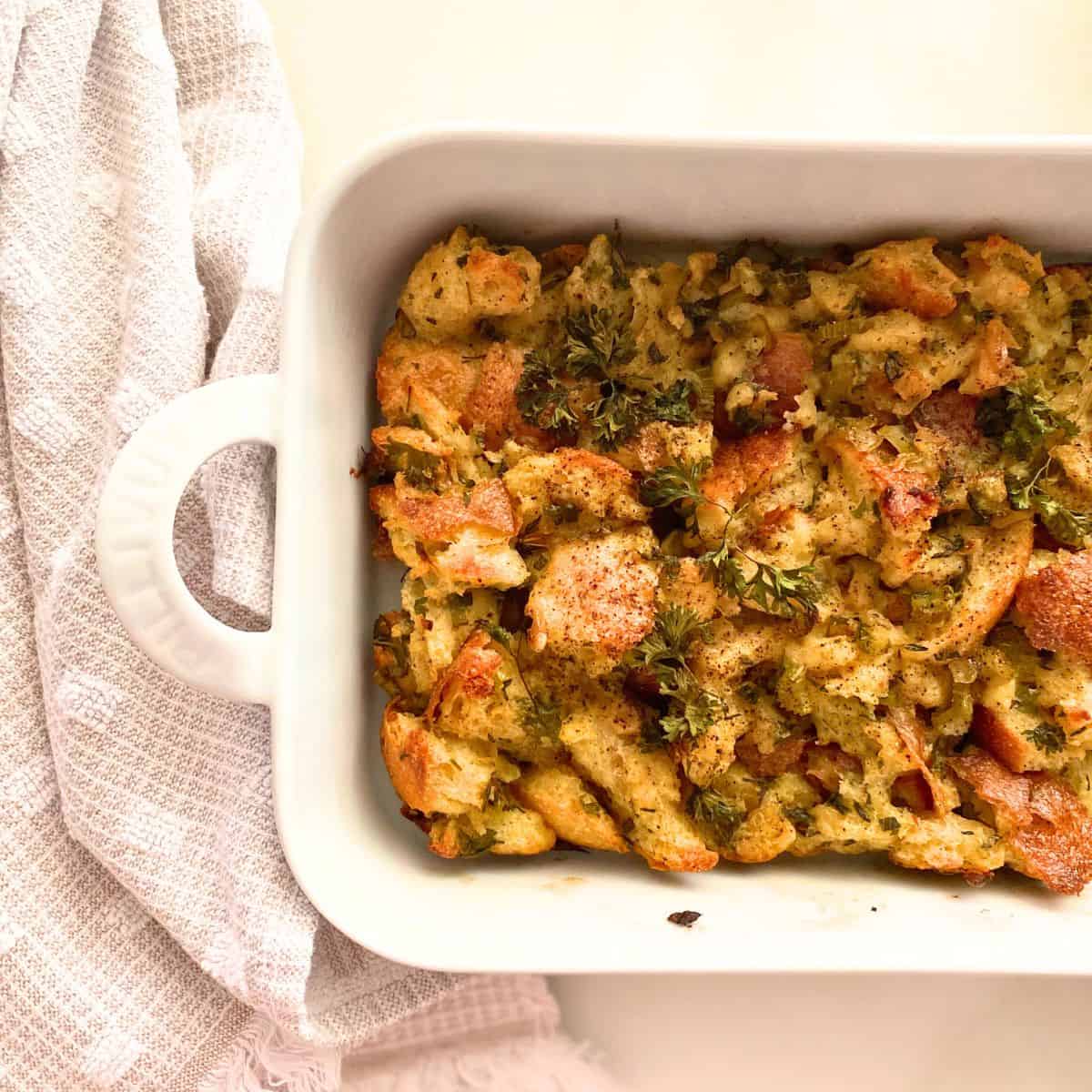
You'll can't go wrong with this recipe because it's
- Made with simple, whole ingredients
- Easy to make
- Uses fresh herbs
Ingredients
Among other ingredients, this sage stuffing recipe is highlighted by fresh herbs, a little onion, and, most importantly, a good dry bread.
I prefer using sourdough bread, but what matters most is that the bread is very dry… day-old dry. I include instructions on how to dry out bread in the oven like I do when I make this recipe.
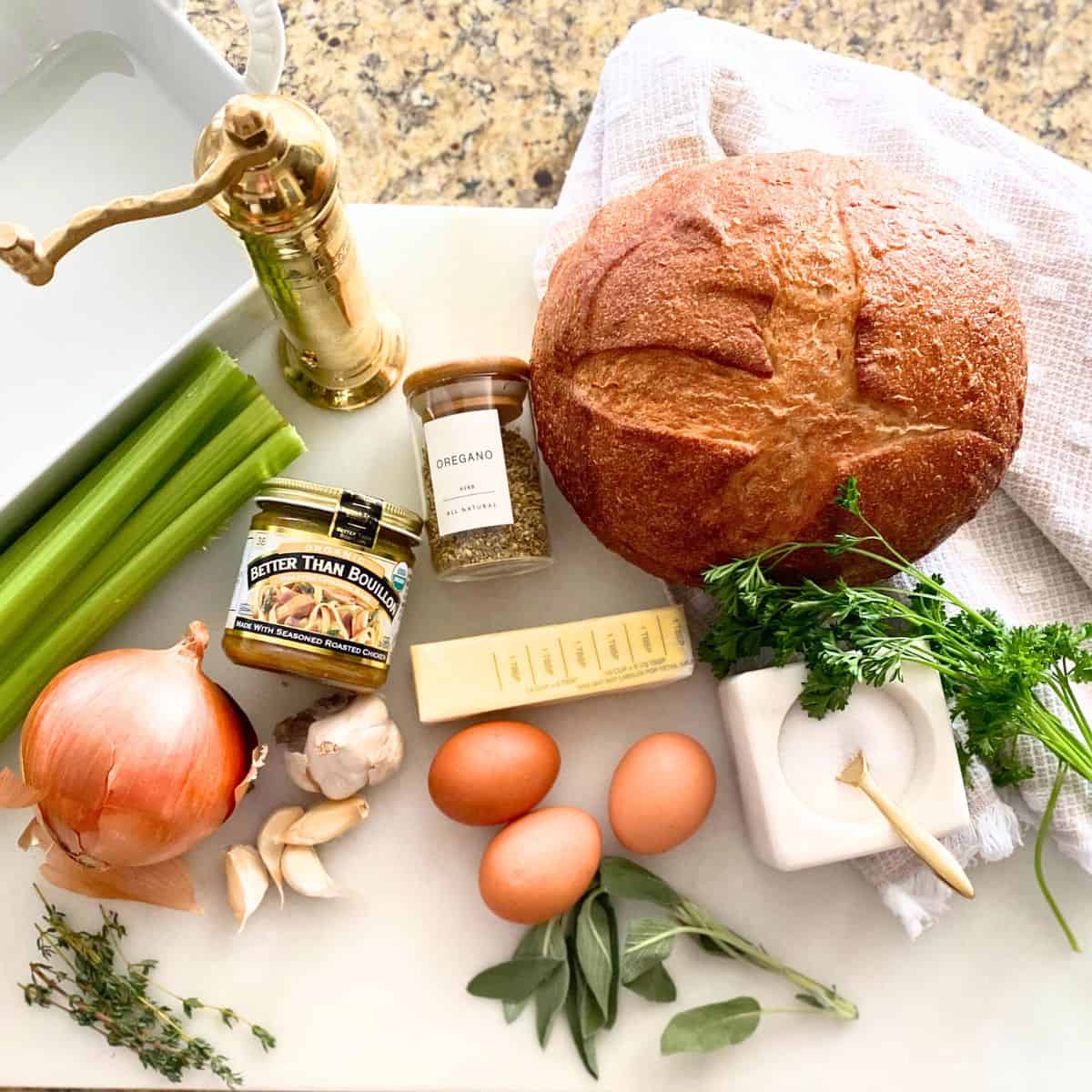
- Bread - Some type of white bread is the popular choice for homemade stuffing. I prefer to use a good sourdough. The key is to use hand-torn day-old bread if you have it. Otherwise, you will read in the instructions about how to dry out the bread in the oven.
- Butter - A signature flavor in stuffing, butter is a must. This recipe includes a measured amount of salt to control the sodium level, which is why it calls for unsalted butter.
- Olive Oil - The richness of extra virgin olive oil makes stuffing better without imparting additional flavor. As I have mentioned many times before, one of my favorite olive oils is La Tourangelle Organic Extra Virgin Olive Oil, single-sourced from Andalucía, Spain. We use it all the time, including as the star of our 3-minute Olive Oil Dipping Sauce recipe.
- Celery - Adds a freshness and a little water content. Once cooked, it will be the perfect consistency-not too crunchy or soggy.
- Yellow Onion - Yellow onion is more savory than white onion and lends a depth of flavor that adds to the comfort food level of this meal.
- Garlic - Aromatic garlic adds a lot of flavor to this side dish. You can mince or roughly chop the garlic. I have prepared it both ways and it tastes great either way. If you want yet more garlic flavor, stir a dusting of garlic powder over the celery as it sweats in the pan.
- Chicken Broth, unsalted - Amping up the comfort food level of this dish, chicken broth adds a lot of flavor. Use unsalted chicken broth to avoid introducing additional sodium, since there is a measured amount already included in this recipe.
- Fresh Sage - The namesake ingredient, fresh sage is what makes this sage stuffing recipe taste out of this world comforting. I prefer fresh sage, but you can use 1 teaspoon dried sage instead.
- Fresh Parsley - Like fresh sage, there is something to be said about using fresh parsley in stuffing. A bit peppery and a whole lot of earthy green color round out this dish. Use 1 teaspoon dried parsley in lieu of fresh and save a few whole leaves for topping and garnish.
- Fresh Thyme - A little bit of a chameleon, thyme can taste floral, sweet, or peppery on its own or all at once. Stuffing would not be complete without it. Use 1 tablespoon fresh or 1 teaspoon dried.
- Fresh Rosemary - Another staple ingredient, rosemary recalls cozy holiday meals. Much like sage and thyme, rosemary is a necessity in this comforting stuffing recipe. If you don't have fresh, use 1 teaspoon dried.
- Eggs - Dressing is not complete without eggs to help emulsify and thicken the ingredients to better stick together.
- Salt, 1 teaspoon - There is a measured amount of salt in this recipe. A little goes a long way, so season to taste once plated.
- Pepper - Adding a bit of bite, coarse, fine ground, or cracked pepper all work well here. If using fine ground, start with ⅛ teaspoon as it's more potent. Otherwise, use a ¼ teaspoon and more to taste once plated.
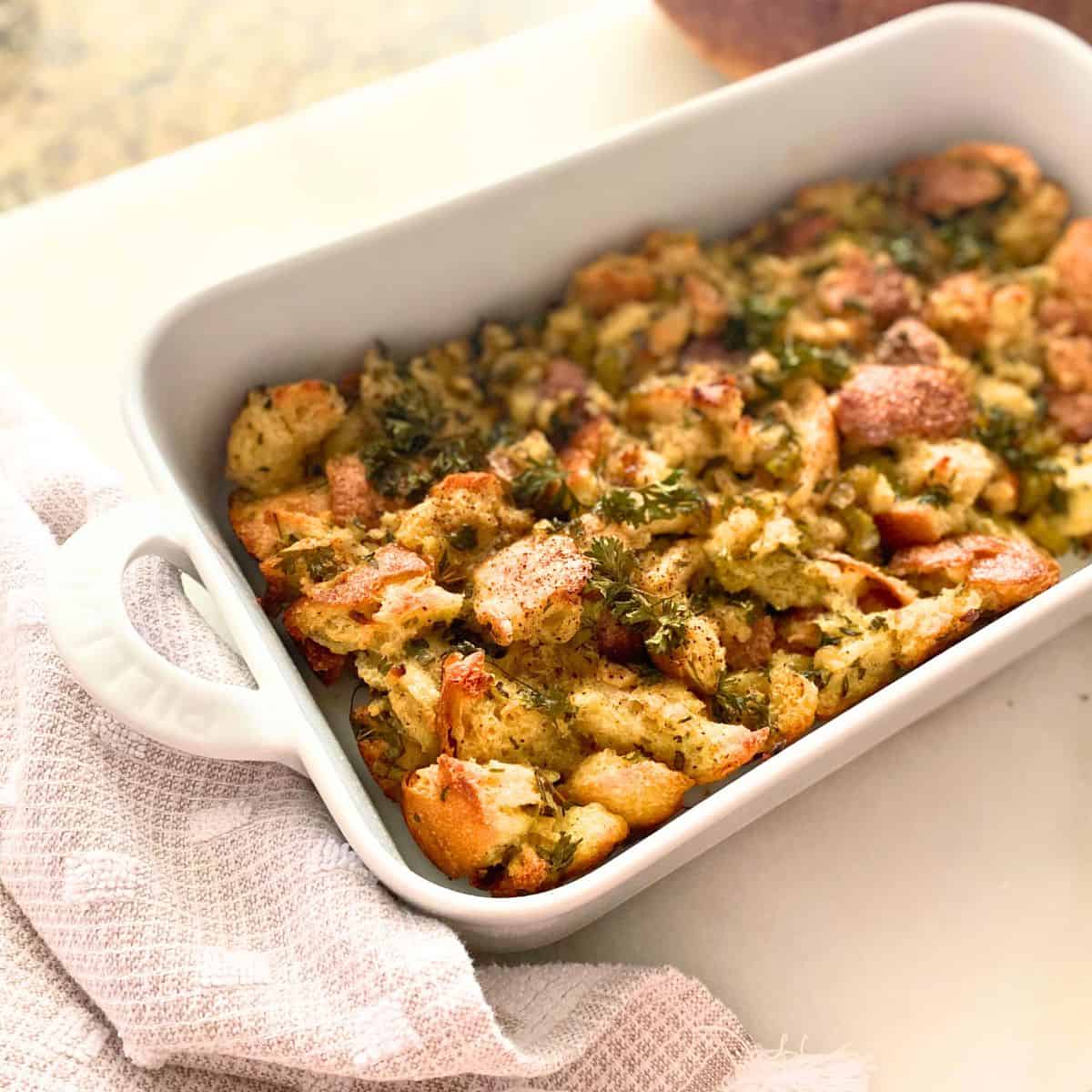
Kitchen Equipment and Supplies
You won't need any special kitchen equipment to make this sage stuffing recipe. In fact, you may already have most if not all of the kitchen supplies on-hand; however, I've included links to my favorites if you need suggestions.
Keep in mind that the depth of the baker will somewhat dictate how long it will take the stuffing to bake. A deeper, narrower baker will yield a thicker stuffing and it may take a little longer to bake than a shallow baker.
- Porcelain Baker - Porcelain bakers or roasting bakeware provides even heat conductivity, which is just one of the many reasons to have at least one on hand. I used my favorite small rectangular baker that has a lovely pleated bottom, but the medium square baker or large square baker should also work. Pillivuyt is still made in France and is both lead and cadmium free, shock resistant, and should last you a very long time. You're looking for at least a 2-quart capacity, though 2.5-quart to 3-quart is best.
- Baking Sheet - To dry out the bread, use a half- to a full baking sheet pan. I have mentioned my favorite baking sheet pan set in the Best Kitchen Gift Ideas you should read now, but they also carry a great 3-piece baking sheet pan set if you're only looking for sheet pans.
- Sauté pan, large - Since this recipe requires sautéing, a wide, high-side pan works best. This stainless steel sauté pan is my favorite. It is part of a set from Williams Sonoma, if you are interested. Similar to the porcelain baker, this high-quality sauté pan may last you a lifetime if taken care of.
Tip:
When did everyone become obsessed with non-stick cookware? Stainless steel is one of the best materials you can use for cooking, just ask any chef. Some people don't like stainless steel because they think it's challenging to clean cooked-on food. All it takes is a little soaking while you eat or while you clean up the kitchen after dinner. This stainless steel cookware set-still made in Canonsburg, PA, USA-should last a very long time if you take care of it. I should know; we've had our set for over 15 years and it's still going strong.
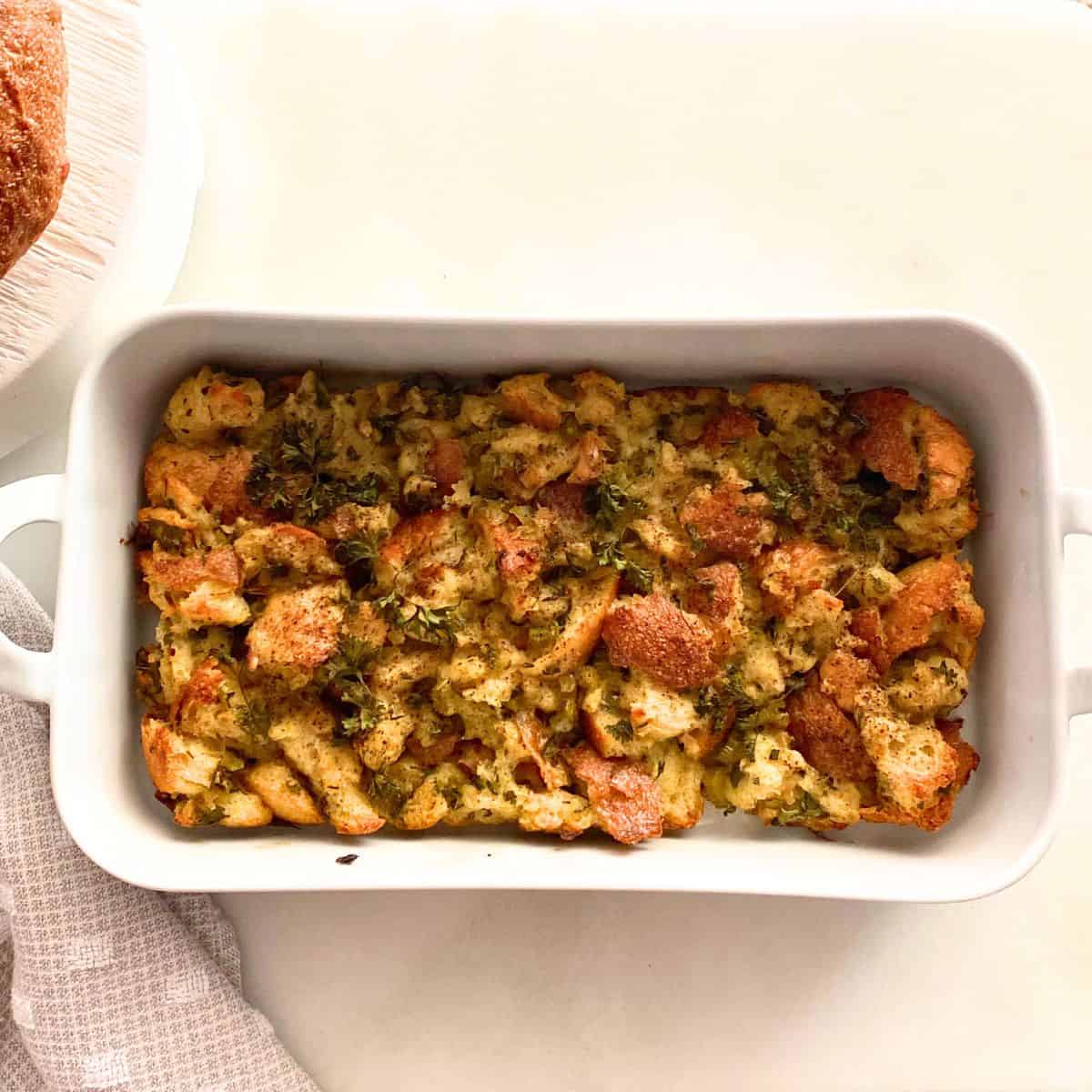
Instructions
Making this homemade sage stuffing recipe comes down to balancing the moisture level. You don't want soggy stuffing, but you don't want overly dry stuffing either.
- Skip to step 2 if you don't need to dry out the bread. Preheat the oven to 250 degrees Fahrenheit. Tear the bread into pieces and spread it out on a large, ungreased, unlined baking sheet. Place it in the oven for 45 minutes to 1-hour, checking periodically. You don't want it to brown, just dry out.
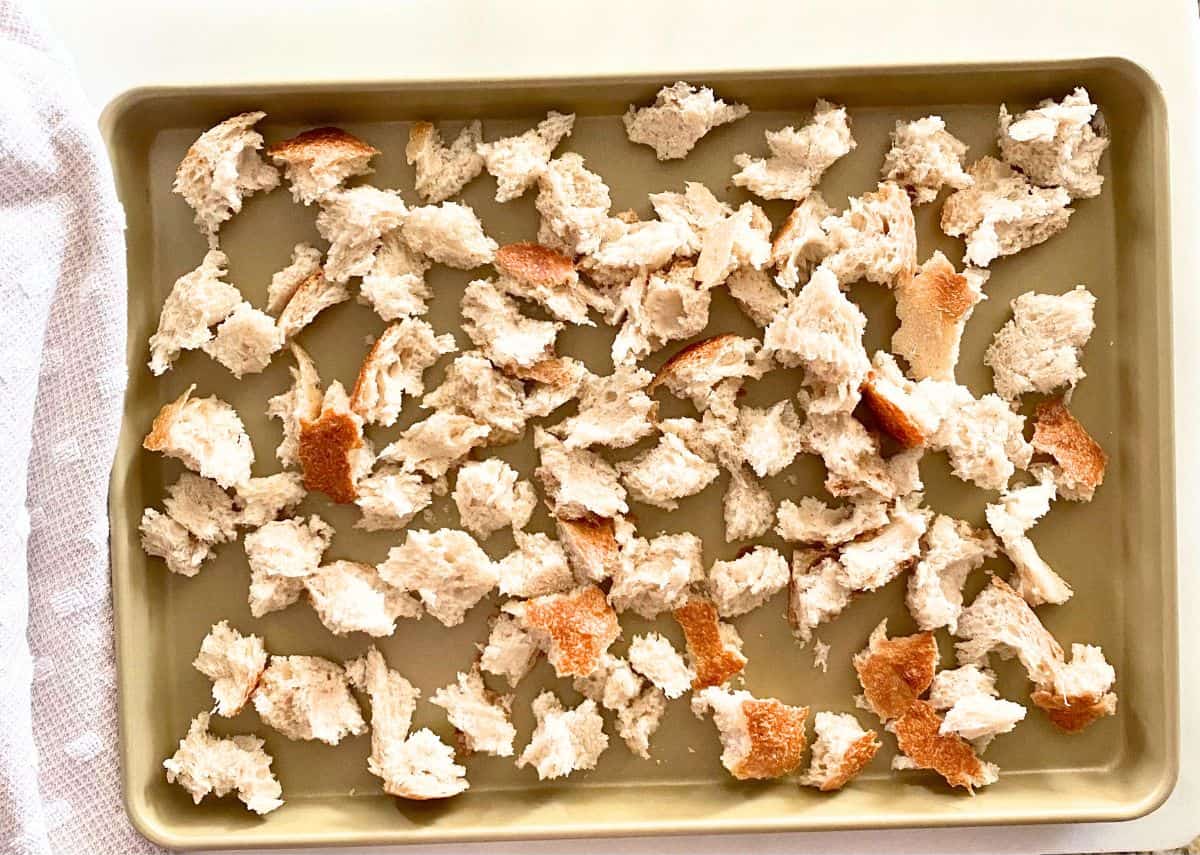
- Roughly chop the onion, thinly slice the celery, and thinly slice the garlic. Set aside.
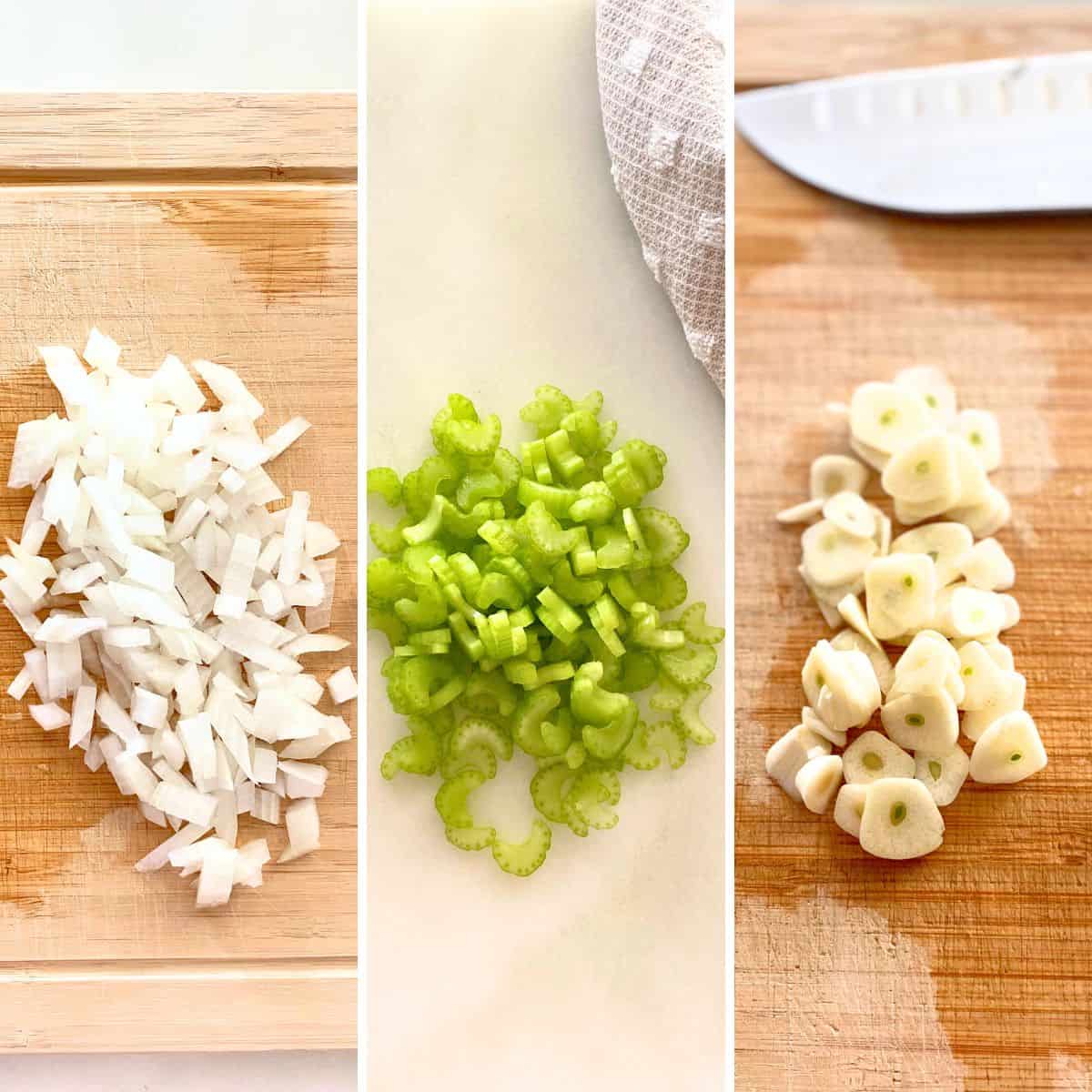
- Roughly chop the fresh parsley, sage, and thyme, and pull the rosemary off the stem. Set aside.
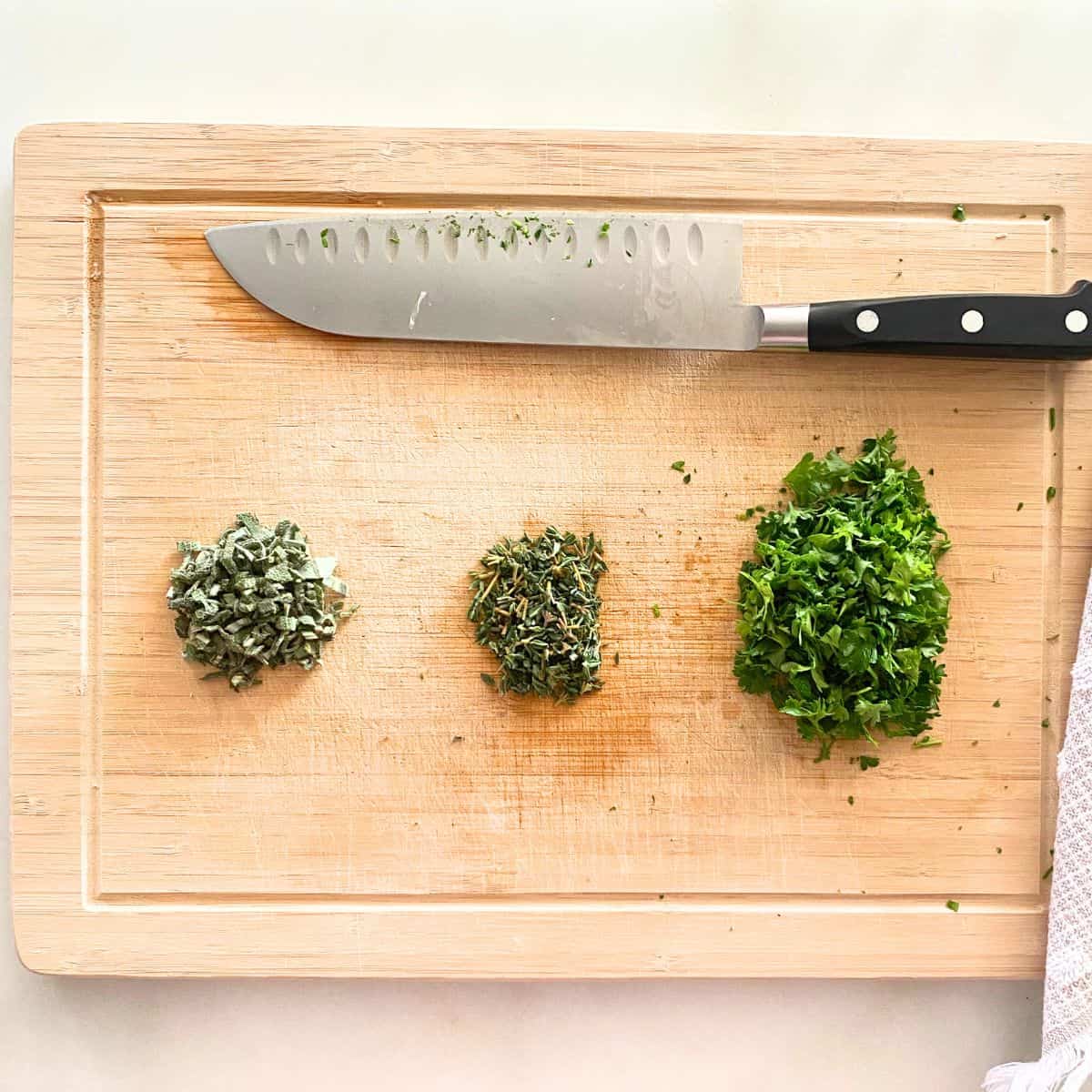
- In a large skillet on low or medium/low heat, add the olive oil and unsalted butter. Allow to warm in the pan until the butter has fully melted.
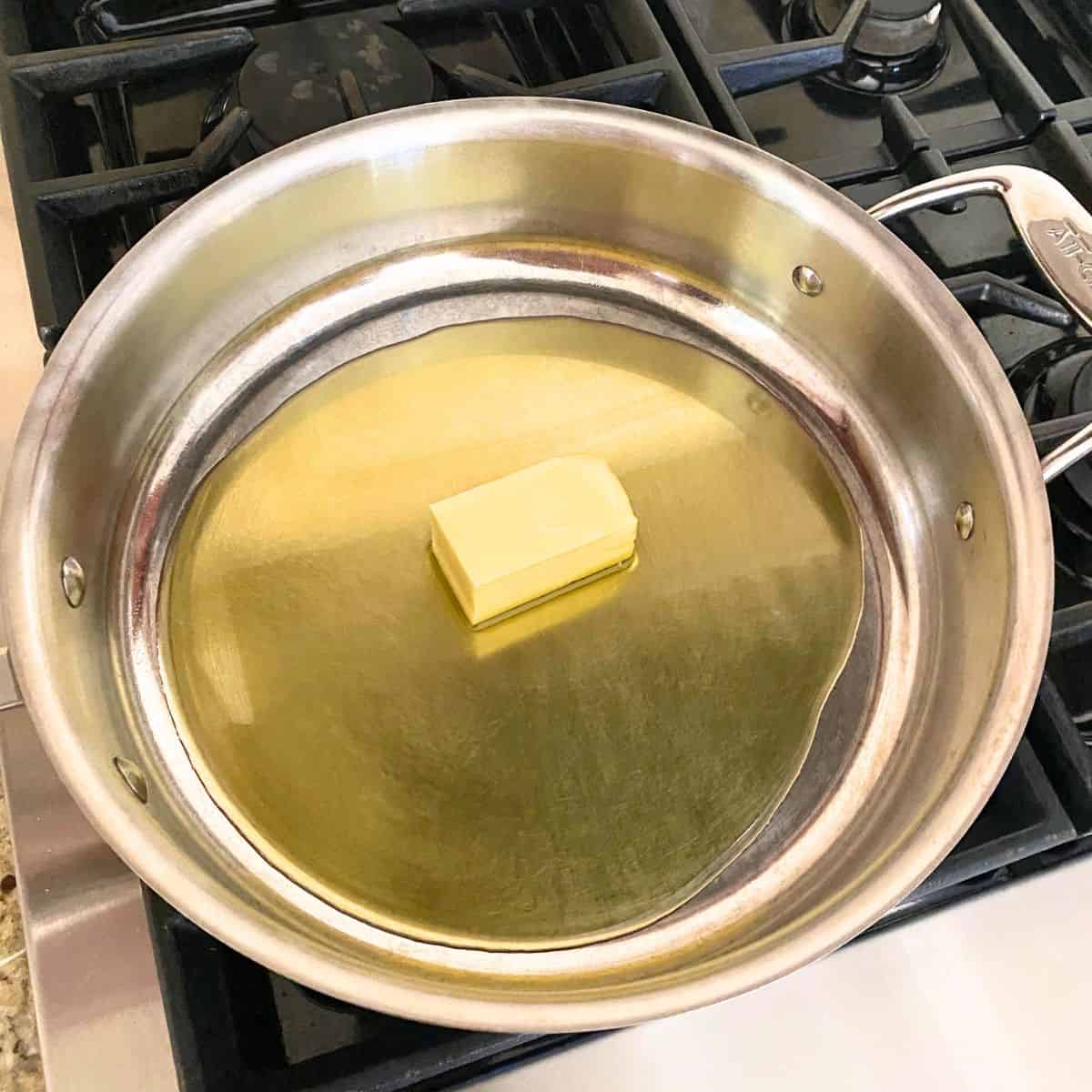
- Add the onions, garlic, and celery to the pan. Season with a pinch of salt and pepper. Stir to combine. Sauté on low or medium/low for about 7-10 minutes or until onions are softened, stirring occasionally. Turn the heat down if it starts to splatter or burn.
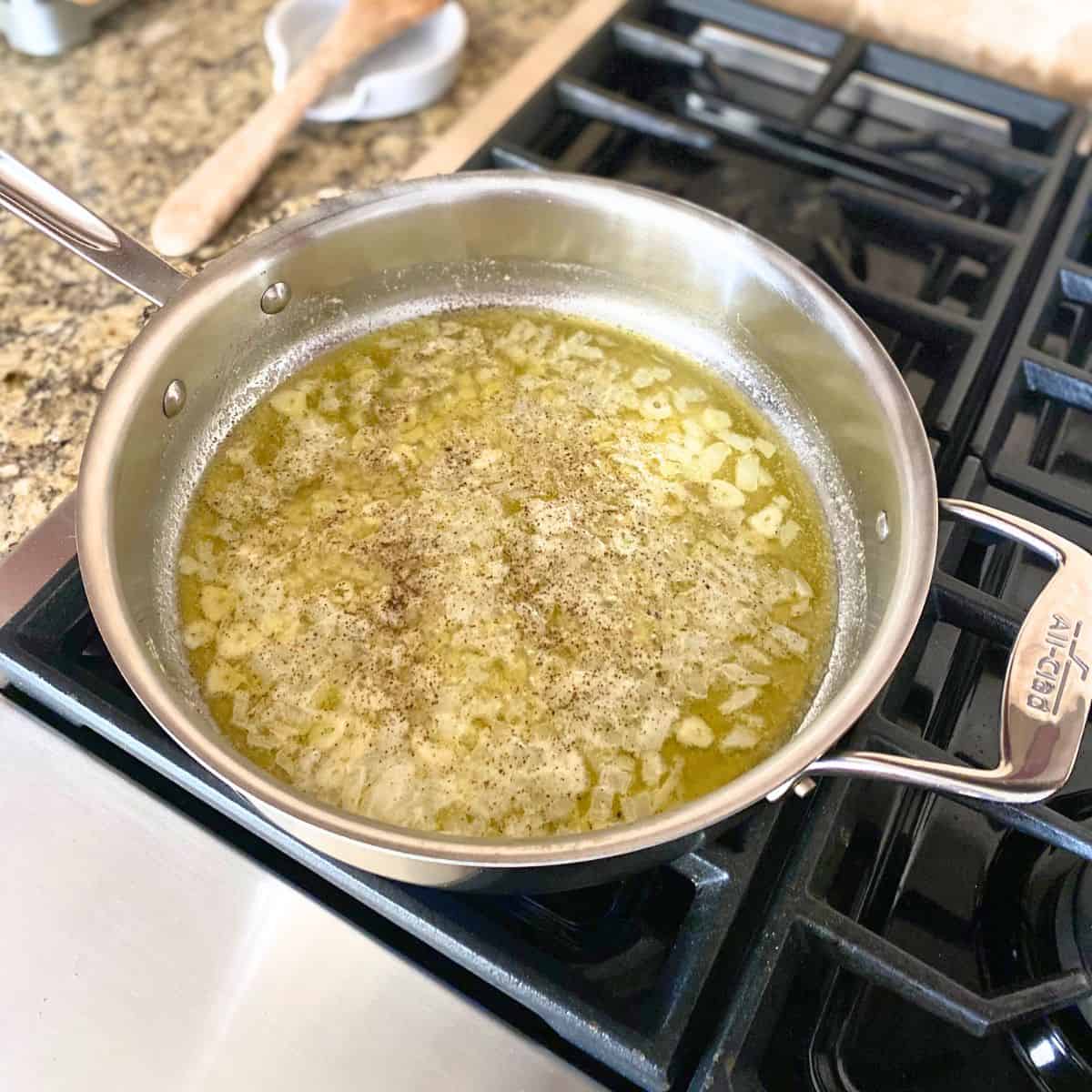
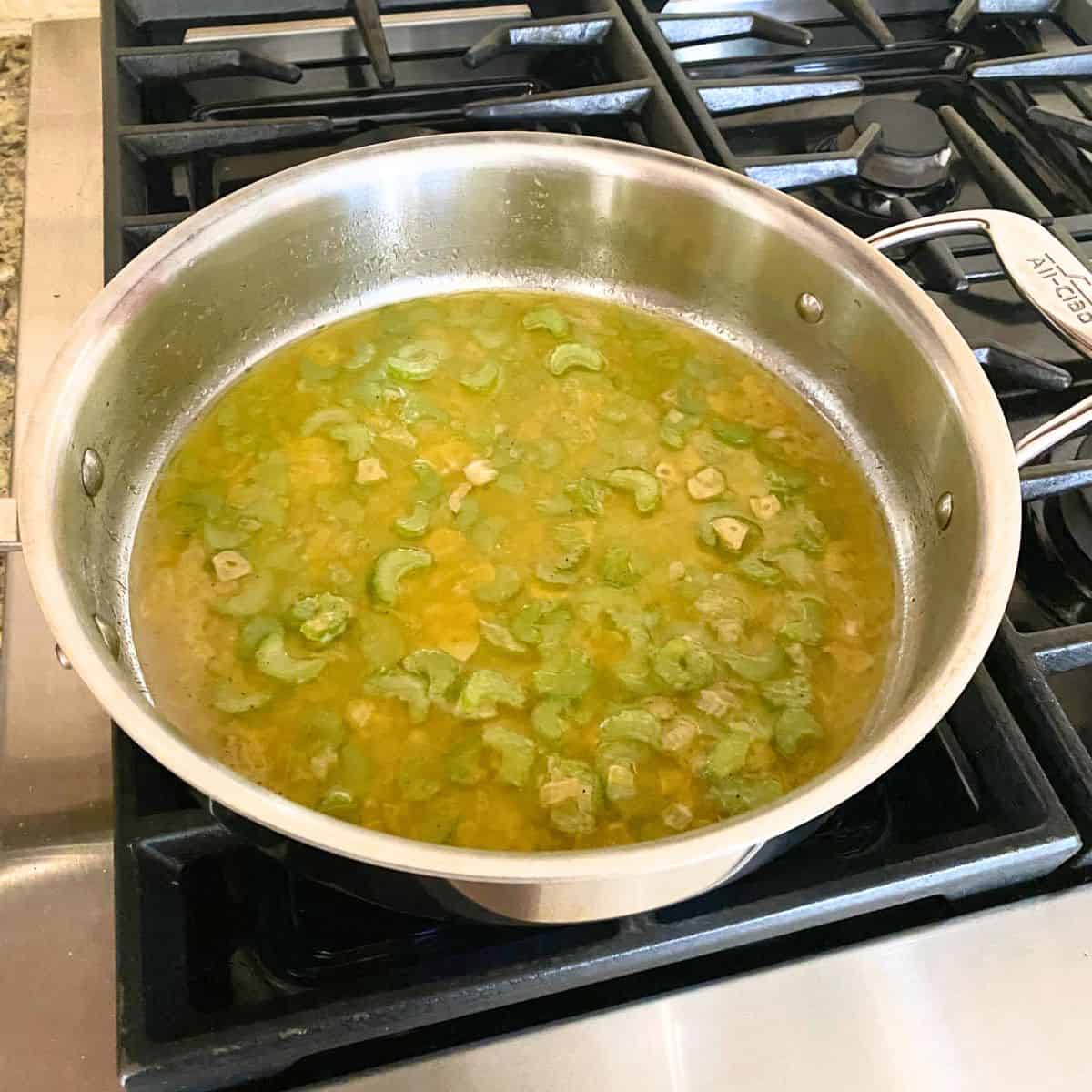
- Meanwhile, preheat the oven to 350 degrees Fahrenheit. In a small mixing bowl, add the eggs and whisk in the remaining chicken broth. Set aside.
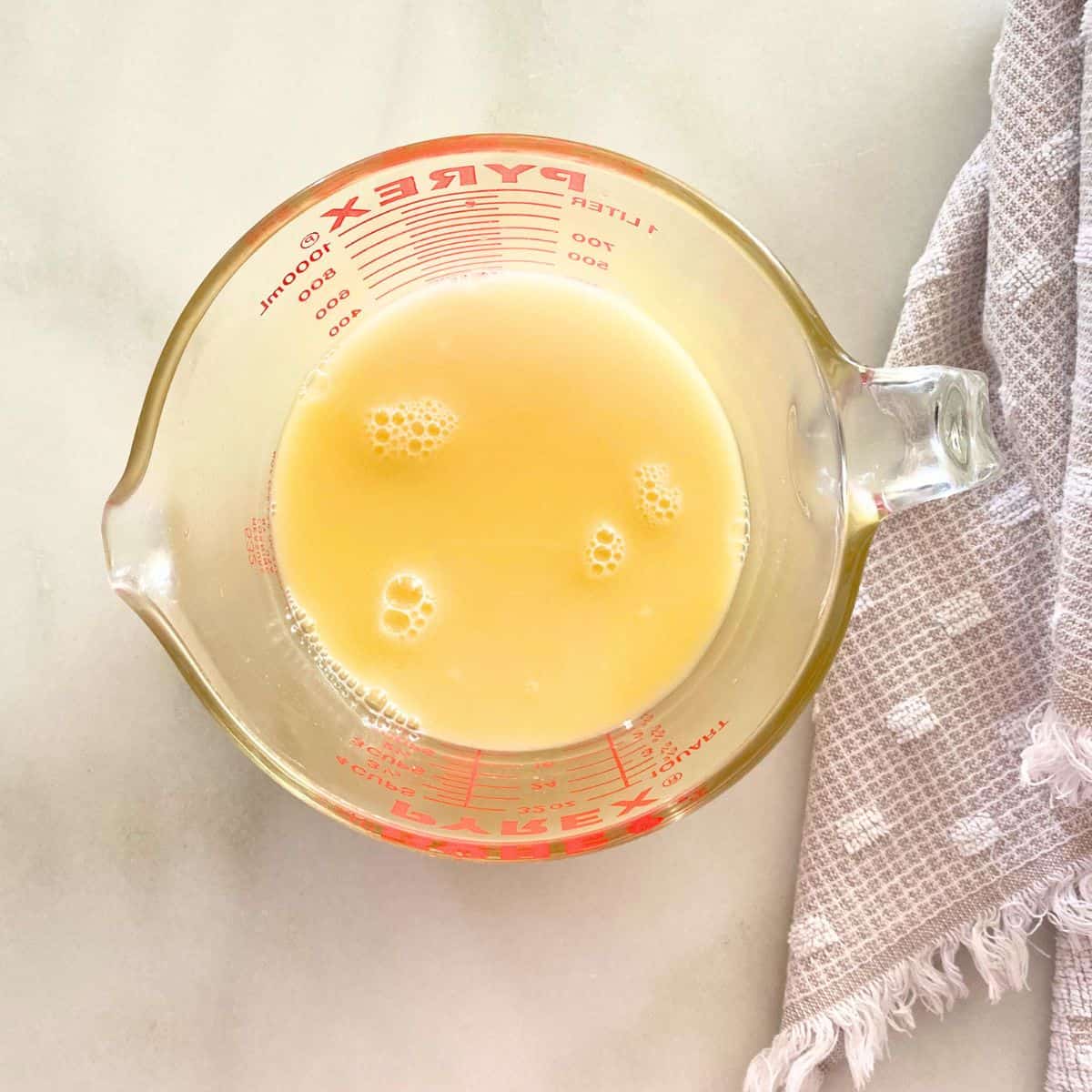
- If you have not done so, tear the bread by hand. After tearing the bread by hand, or if you dried the bread out in the oven, add it to a large mixing bowl. Set aside.
- To the sauté pan, add a ½ cup chicken broth and 1 teaspoon salt. Stir to combine. Warm for 1-2 minutes in the pan.
- Add the contents of the sauté pan and the egg-broth mixture to the bread in the mixing bowl. Caution: Use caution as the mixture will still be very hot. With a spatula, gently mix it together to combine. You want to evenly coat the bread.
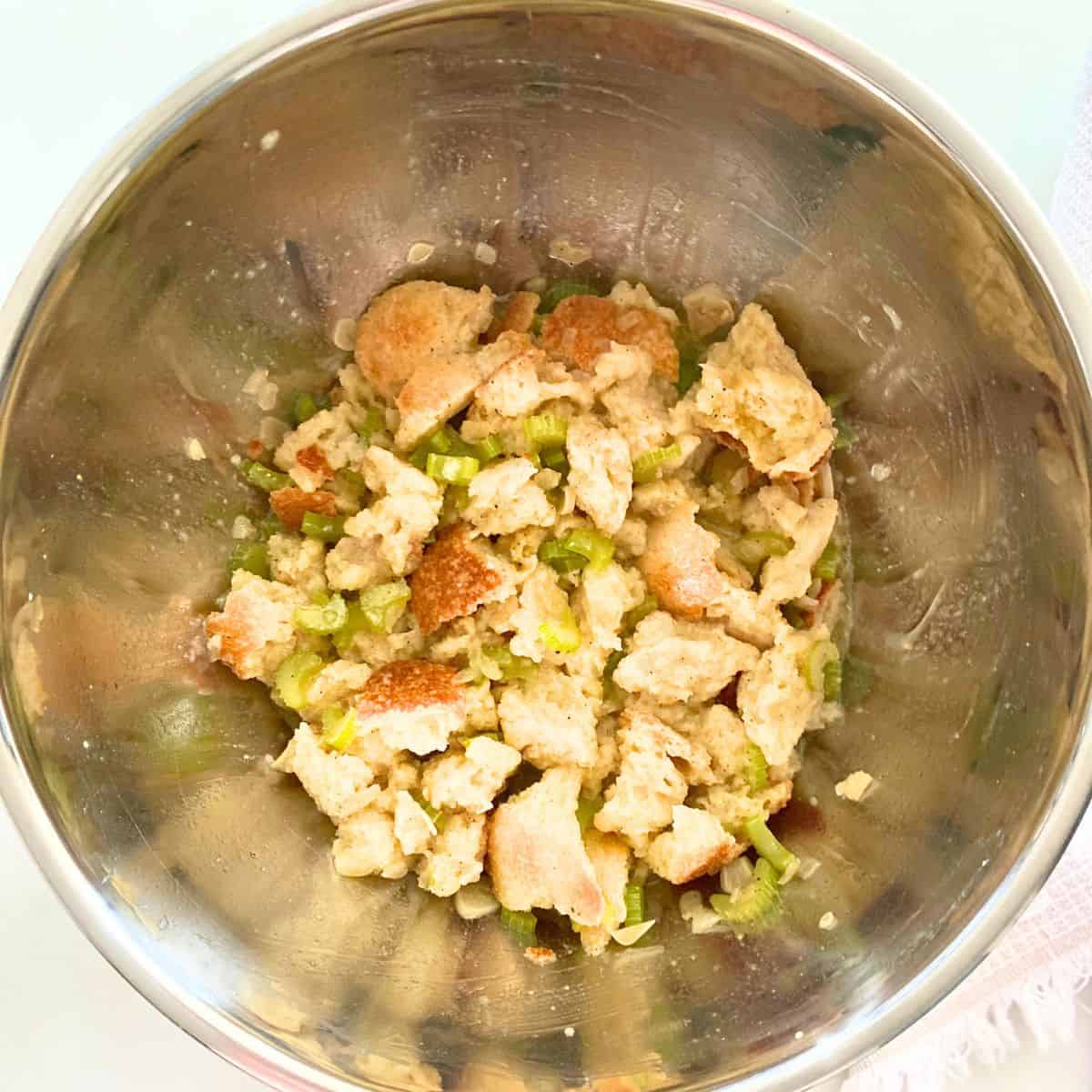
- Add the parsley, sage, rosemary, and thyme. Use a spatula, or your hands if it's not too hot, to gently mix it together.
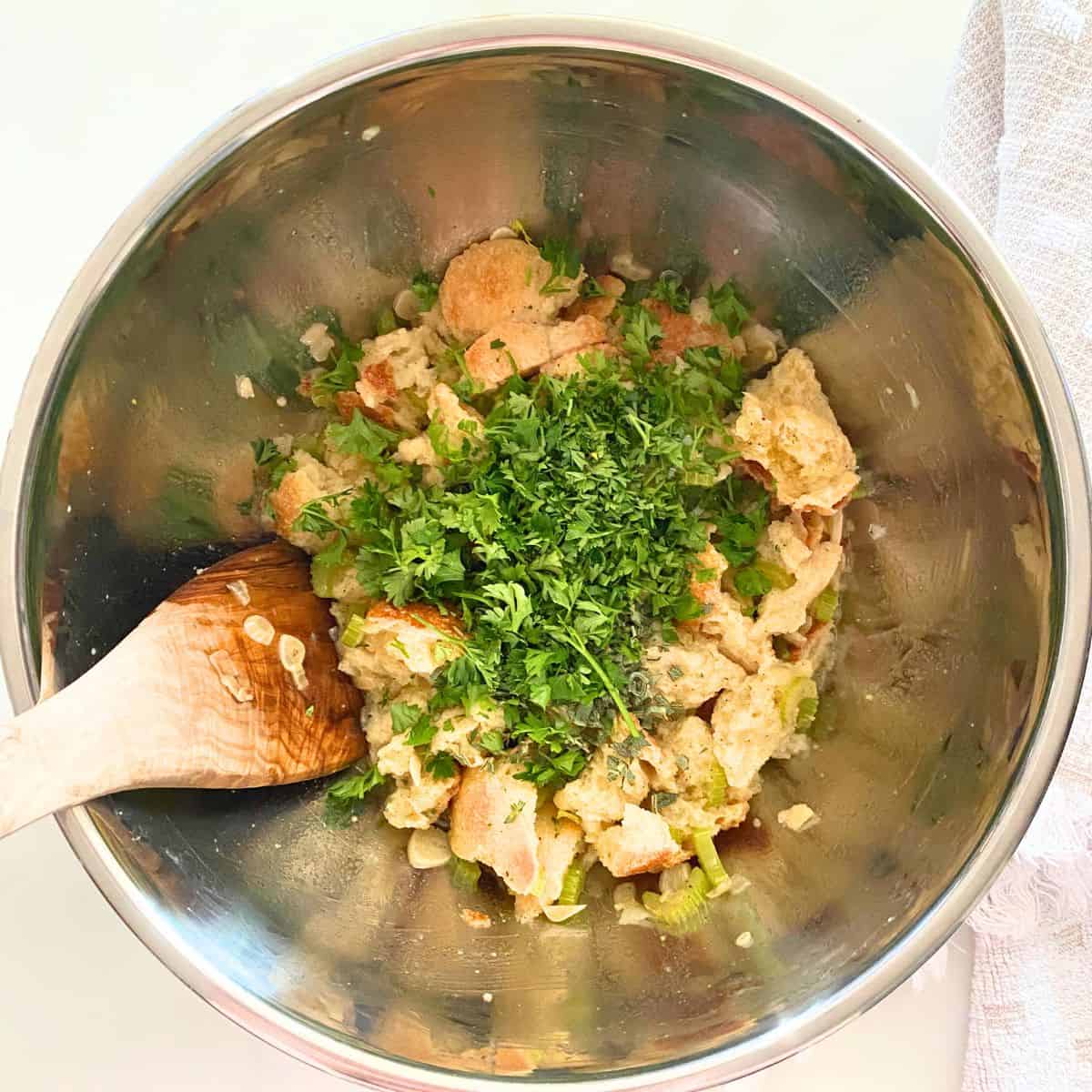
- Spoon the mixture in a large oven-safe baking dish, making sure to not pack it down. Season with salt and pepper. Optionally top with fresh parsley leaves.
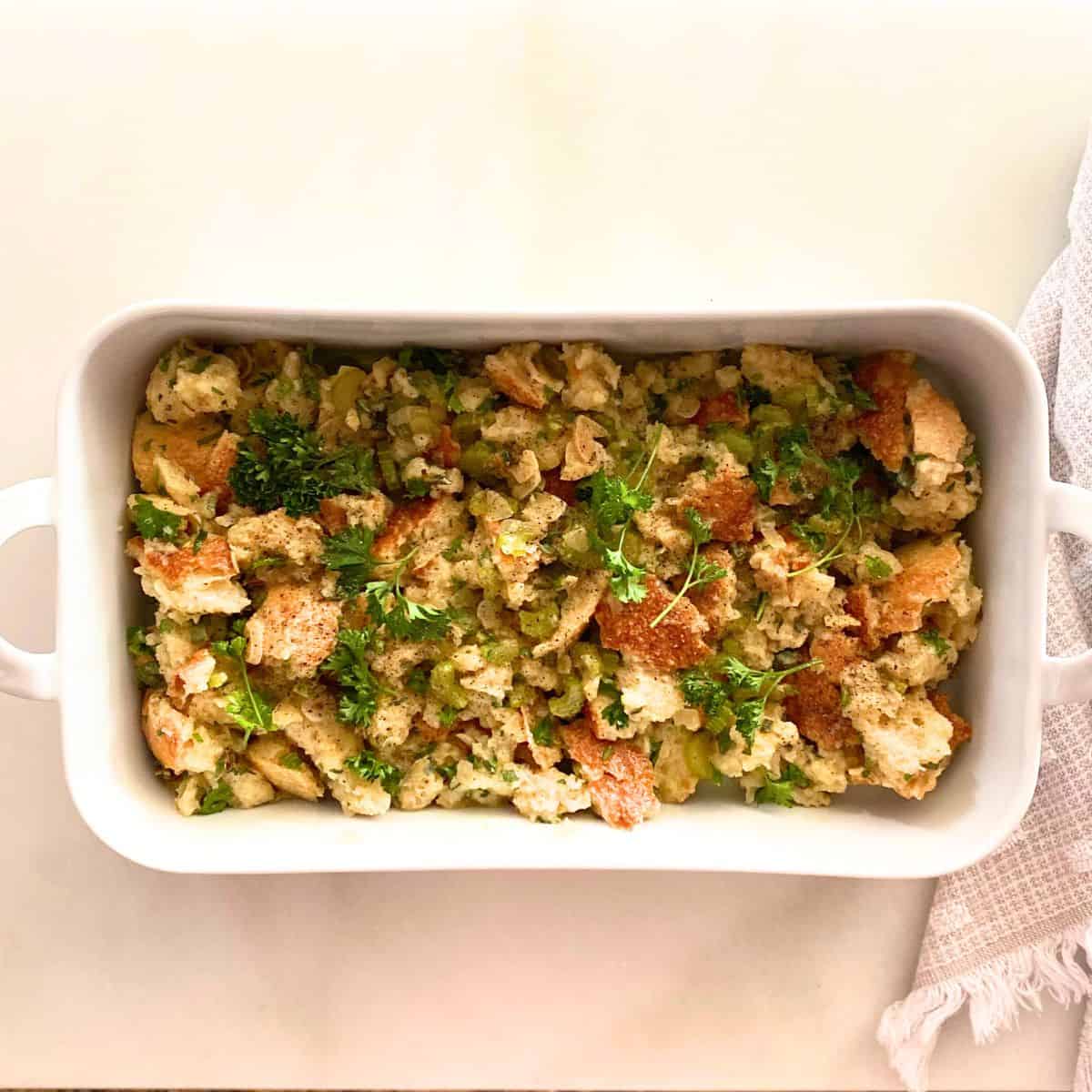
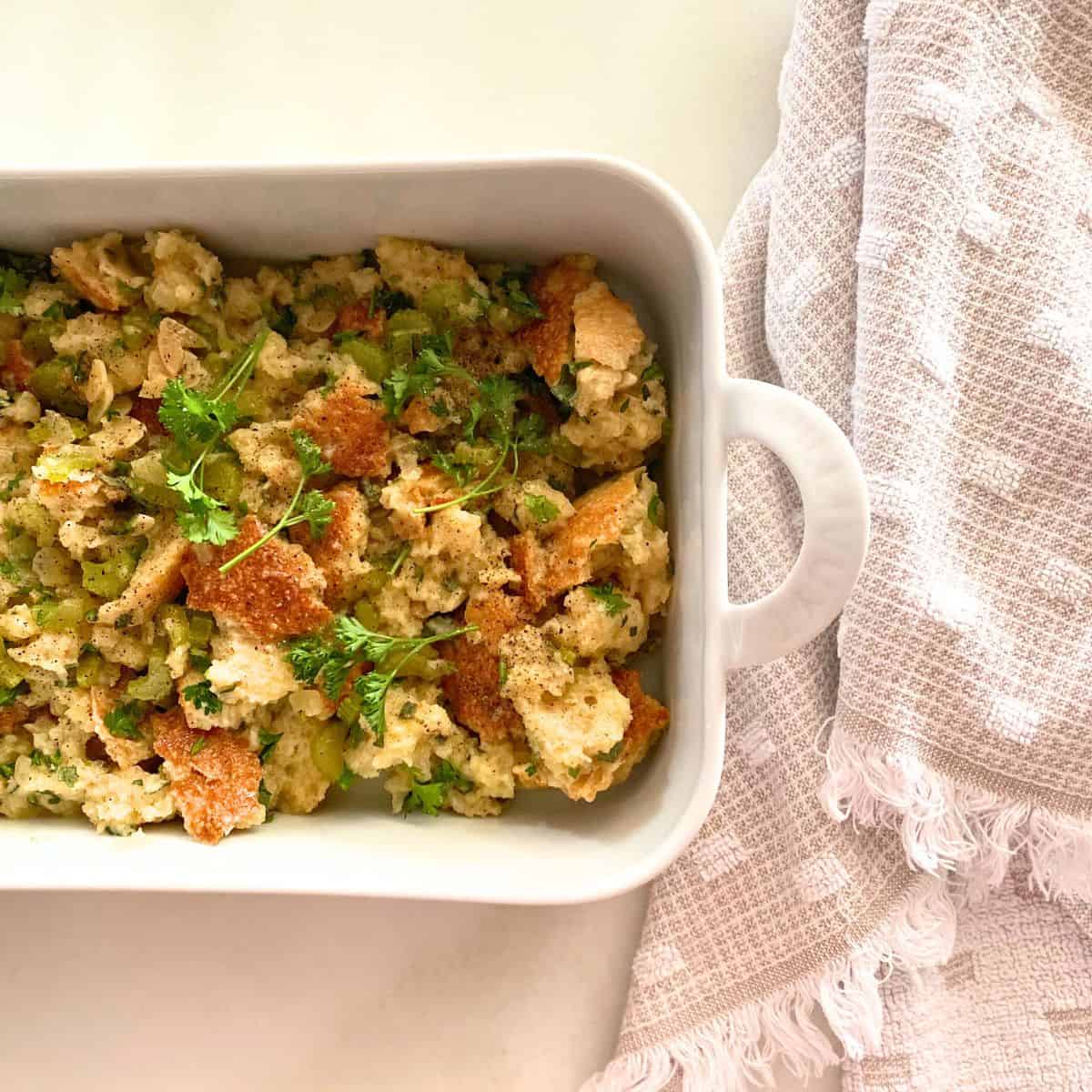
- Bake uncovered in the oven at 350 degrees Fahrenheit for 35-40 minutes. Note: Some cover their stuffing for the first 35-40 minutes and then uncover for the remaining time. If you leave it uncovered, watch it carefully in the last round of baking to ensure the top does not burn.
- Increase the oven temperature to 425 degrees Fahrenheit. Bake uncovered for another 20-25 minutes or until the top is a nice crispy, crunchy, golden brown. Again, check it periodically to ensure the top is not burning.
- Allow to cool for about 10 to 15 minutes before serving. This will help dry it out a little more as it cools.

Variations and Substitutions:
- Omit the rosemary if you don't like it.
- Sprinkle a little garlic powder on top before baking if you love garlic flavor.
- If you only have salted butter on hand, omit the measured amount of salt and season to taste once plated.

Serving Suggestions
You can enjoy classic sage stuffing anytime of year, though it has a special place in many homes around the holidays.
Pair this homemade stuffing recipe with an entree of chicken or turkey and hearty wild rice casserole for a special meal the whole family will enjoy!
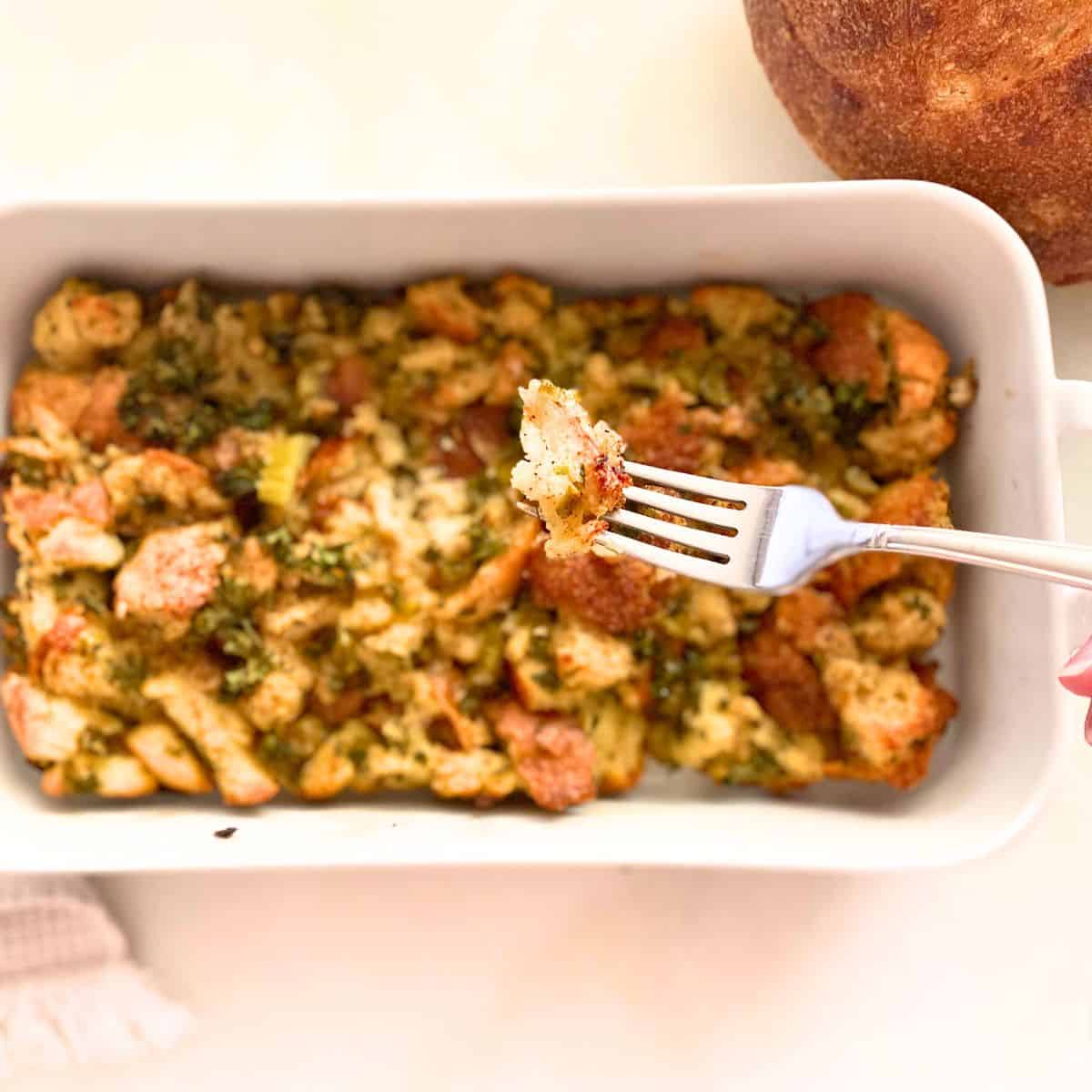
How to Store Leftovers
You can easily store leftover stuffing in a sealed container in the refrigerator for a few days.
If you are not going to eat the leftovers within a few days, you can freeze homemade stuffing in freezer safe containers that are appropriate portion sizes to reheat. Consume within a month of freezing.

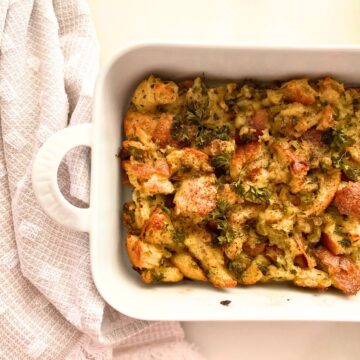
Classic Savory Sage Stuffing Recipe
Ingredients
- 1- 1 ¼ pounds Bread, sourdough, ciabatta or other bread, hand-torn
- 1 cup Celery, sliced thin
- ¼ Yellow onion, roughly diced small
- 4 cloves Garlic, sliced thin or roughly chopped
- ¼ cup Butter, unsalted
- ¼ cup Olive oil
- 1 ½ cups Chicken broth or stock, unsalted, divided
- 1 tablespoon Fresh Sage, roughly chopped small
- 1 tablespoon Fresh Parsley, roughly chopped, plus a few whole leaves for topping
- 1 tablespoon Fresh Thyme, roughly chopped
- 1 tablespoon Fresh Rosemary, pulled from stem
- 2 Eggs
- 1 teaspoon Salt, plus more to taste
- ¼ teaspoon Pepper, plus more to taste
Instructions
- Skip to step 2 if you don't need to dry out the bread. Preheat the oven to 250 degrees Fahrenheit. Tear the bread into pieces and spread it out on a large, ungreased, unlined baking sheet. Place it in the oven for 45 minutes to 1-hour, checking periodically. You don't want it to brown, just dry out.
- Roughly chop the onion, thinly slice the celery, and thinly slice the garlic. Set aside.
- Roughly chop the fresh parsley, sage, and thyme, and pull the rosemary off the stem. Set aside.
- In a large skillet on low or medium/low heat, add the olive oil and unsalted butter. Allow to warm in the pan until the butter has fully melted.
- Add the onions, garlic, and celery to the pan. Season with a pinch of salt and pepper. Stir to combine. Sauté on low or medium/low for about 7-10 minutes or until onions are softened, stirring occasionally. Turn the heat down if it starts to splatter or burn.
- Meanwhile, preheat the oven to 350 degrees Fahrenheit. In a small mixing bowl, add the eggs and whisk in the remaining chicken broth. Set aside.
- If you have not done so, tear the bread by hand. After tearing the bread by hand, or if you dried the bread out in the oven, add it to a large mixing bowl. Set aside.
- To the sauté pan, add a ½ cup chicken broth and 1 teaspoon salt. Stir to combine. Warm for 1-2 minutes in the pan.
- Add the contents of the sauté pan and the egg-broth mixture to the bread in the mixing bowl. Caution: Use caution as the mixture will still be very hot. With a spatula, gently mix it together to combine. You want to evenly coat the bread.
- Add the parsley, sage, rosemary, and thyme. Use a spatula, or your hands if it's not too hot, to gently mix it together.
- Spoon the mixture in a large oven-safe baking dish, making sure to not pack it down. Season with salt and pepper. Optionally top with fresh parsley leaves.
- Bake uncovered in the oven at 350 degrees Fahrenheit for 35-40 minutes. Note: Some cover their stuffing for the first 35-40 minutes and then uncover for the remaining time. If you leave it uncovered, watch it carefully in the last round of baking to ensure the top does not burn.
- Increase the oven temperature to 425 degrees Fahrenheit. Bake uncovered for another 20-25 minutes or until the top is a nice crispy, crunchy, golden brown. Again, check it periodically to ensure the top is not burning.
- Allow to cool for about 10 to 15 minutes before serving. This will help dry it out a little more as it cools.

Did you make this recipe?
Leave a comment and rate this recipe using the stars in the comment form.

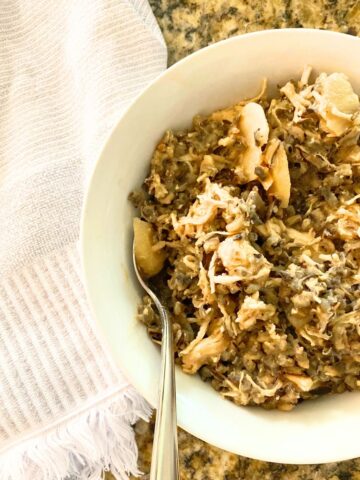
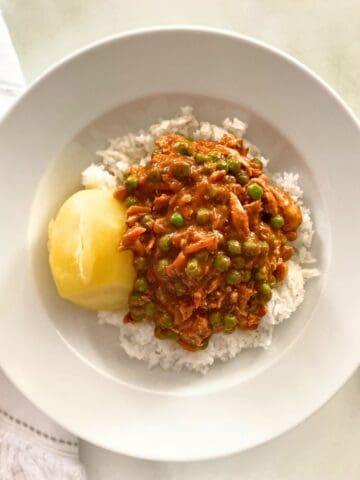
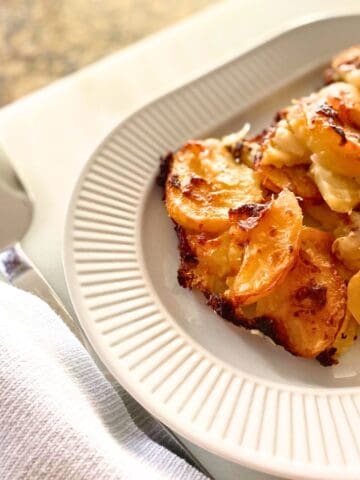
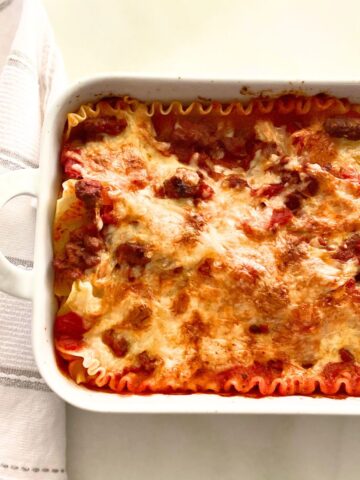
Leave a Reply